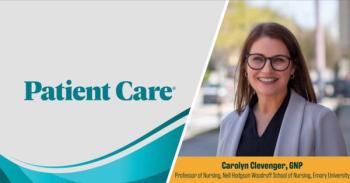
Abdominal Aortic Aneurysm Management: From Detection to Referral and Ongoing Surveillance

Highlights include size-based surveillance protocols, referral timing, cardiovascular risk reduction, and coordination with vascular surgery.
The ultrasound comes back positive for abdominal aortic aneurysm (AAA). Now what? The management pathway for abdominal aortic aneurysm depends critically on whether the patient is stable or unstable, and for stable patients, the size of the aneurysm dictates everything—surveillance intervals, referral urgency, and intervention timing.
Primary care physicians play a dual role in
Patient Care® spoke with Dr Haque, a clinical assistant professor of family medicine at Ochsner LSU Health System in Shreveport, during the
In this segment, Dr Haque covers:
- Managing unstable (ruptured) AAA: recognizing the emergency and prognosis
- Size-based surveillance protocols for stable AAA
- When and how to refer to vascular surgery
- The primary care role in cardiovascular risk reduction
- Coordination strategies with vascular specialists
The following transcript has been lightly edited for style and clarity.
Patient Care: Once AAA is detected, what are key steps in management and referral? And how should primary care teams coordinate ongoing follow-up for stable versus unstable patients?
Kabiul Haque, MD: Yes, so AAA can present as stable or unstable. So let's talk about the unstable. So let's say somebody has AAA and it ruptured. We see this as primary care doctors a lot of times in the emergency department or also in the urgent care. So let's say it's already ruptured. It's too late, so you need to call the vascular surgeon right away. You cannot delay at all. Okay? Now, sometimes the vascular surgeon tells you that, hey, it's already ruptured, I cannot help you, it's too big. Now, in that case, the primary care physician, or as a hospitalist or ER doctor, you have a big job. So sometimes family and the patient want to know, how long will I live? It's already ruptured. My condition is bad. I'm having abdominal pain. How long will I live? So the research shows that the patient can live between two to seven hours based on their risk factors, comorbidities, and their blood pressure. So if it's unstable, it's already ruptured, and the surgeon cannot do anything, so at least you can tell the patient or the family it's time, probably, for palliative care. And depending on the situation, the patient can live between 2 and 7 hours.
Now, let's talk about the stable patient. Let's say the patient comes to you and you get the ultrasound done, and then you see the size of the diameter. If it's less than 3 centimeters, the size of the diameter, then usually the risk of rupture is almost zero every year. If it's 3 centimeters to 3.9 centimeters, there is some risk of rupture. So you need to check the AAA screen, or like re-screen or surveillance, every 3 years. Now, if it's more than 3.9, let's say 4 to 4.5, then you should do every 12 months. And definitely, on the initial diagnosis of AAA, you always refer the patient to the vascular surgeon. That's what the Society of Vascular Surgery recommends. Anytime you diagnose a patient with AAA, you refer them to the vascular surgeon. That's the first thing. Now, if it's between four centimeters to 4.5, you do every 12 months surveillance. Now 4.5 and above is every six months. So that's more important. Now, the Society of Vascular Surgery, they usually do the intervention between five to 5.4 centimeters for females and 5.5 centimeters and above for males. So at least make sure you refer the patient whenever you diagnose. But 4 centimeters, definitely, you need to keep in touch with the vascular surgeon.
Now, not only that, you also have a big job as a PCP, which is that you have to make sure that the patient's risk you can mitigate. For example, cardiovascular risk reduction. If the patient has high blood pressure, you have to bring down the blood pressure. Your goal should be 130 over 70, or maybe even less, 120 over 70. That's the first thing, taking care of the blood pressure. The other thing is a statin. You have to make sure that the patient is on cholesterol-lowering medicine. So you have to bring down the cholesterol to 70. Also, smoking cessation counseling. Those 3 things are very important. As a primary care doctor, you can also work with the vascular surgeon to help the patient. So that's for the stable patient, but definitely work with the vascular surgeon and work together to help the patients.
Series Navigation
- Part 1:
Effective Management of Peripheral Arterial Disease in Primary Care - Part 2:
AAA Screening in Primary Care: Criteria, Implementation, and Patient Communication - Part 3: AAA Management: From Detection to Referral and Ongoing Surveillance (You are here)
- Part 4: Diagnosing DVT: Clinical Pearls for Challenging Presentations
- Part 5: Key Takeaways: History and Smoking Cessation in Vascular Disease Prevention
Newsletter
Enhance your clinical practice with the Patient Care newsletter, offering the latest evidence-based guidelines, diagnostic insights, and treatment strategies for primary care physicians.


















































































































































































































































































